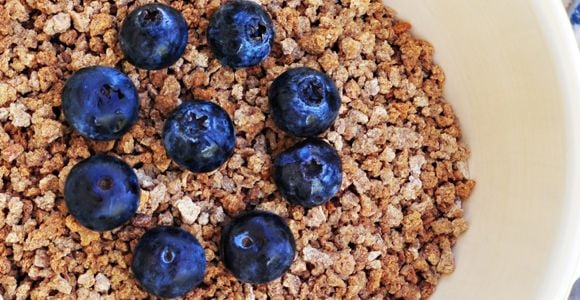You have probably heard that fiber is great for digestion and can reduce your cholesterol. But did you know that it can also help with weight management by making you feel fuller? Fiber can also aid in the treatment of constipation, hemorrhoids, diverticulitis and irritable bowel syndrome while reducing your risk for type-2 diabetes, heart disease and some cancers.
So, what is fiber?
Fiber is indigestible carbohydrate found in plant foods.
What foods contain fiber?
Fiber is only found in foods with plant material in them like cereals, fruits, vegetables, whole grains and legumes. Fiber is not naturally occurring in dairy or meats.
What is the difference between soluble and insoluble fiber?
There are two types of fiber, soluble and insoluble. Both are important for health and have their own unique properties and benefits.
Soluble fiber absorbs water as it moves through the gastrointestinal tract and turns into a gel, slowing digestion. This gel binds to some of the cholesterol in the small intestine and is then carried out of the body. Soluble fiber is also helpful in regulating blood sugar for people with diabetes or for those who are at risk.
Sources of soluble fiber include barley, oat bran, beans, nuts, seeds, peas, lentils, pears, strawberries and blueberries.
Insoluble fiber acts much differently than soluble fiber. While it doesn't dissolve in water like soluble fiber, it does move food more quickly through the stomach and intestines while adding bulk to the stool. This promotes regularity and helps prevent constipation. Sources of insoluble fiber include whole grain wheat bread, couscous, barley, brown rice, bulgur, seeds, carrots, cucumbers, zucchini, celery and tomatoes.
How many grams of fiber should I eat a day?
The recommended intake for fiber depends on the amount of calories consumed each day. Current recommendations from the USDA suggest that, in general, older children and adults should aim for 20 to 35 grams per day.
How do I add more fiber to my diet?
• Choose whole grain cereals, breads, rice and pastas instead of the white, processed varieties;
• Eat whole fruit instead of drinking fruit juices;
• Snack on fruits and vegetables instead of cookies or chips.
When increasing your fiber, do it gradually. Eating more fiber than what you are used to can cause gas, bloating and cramps. Also make sure you drink enough water, this helps the fiber pass through the digestive system.
What about fiber supplements?
Fiber supplements can be used to improve fiber intake. The National Fiber Council explains that as a general rule, powder fiber supplements are soluble fiber, while solid fiber supplements deliver either soluble or insoluble, depending on the product.
When looking at a supplement, take a look at the source of fiber before you buy it. According to the National Institutes of Health, the following fiber types have established or investigated health benefits: Guar gum, glucomannan, psyllium, pectin, CM3, cellulose, wheat fiber and alignate.
Is it possible to eat too much fiber?
Eating excessive fiber may cause some gastrointestinal discomfort, constipation, diarrhea and/or reduce the absorption of certain minerals like calcium, iron, zinc, and magnesium.
The Best 5 Vegetarian Protein Sources
Mandy Seay is a bilingual registered and licensed dietitian who holds both a bachelor's degree in nutrition and in journalism. After gaining 30 pounds while living abroad, Mandy worked to lose the weight and regain her health. It was here that she discovered her passion for nutrition and went on to pursue a career as a dietitian. Mandy currently works as a nutrition consultant and freelance writer in Austin, Texas, where she specializes in diabetes, weight management and general and preventive nutrition. She recently published her first book, Your Best Health, a personalized program to losing weight and gaining a healthy lifestyle. Please visit Mandy's website at Nutritionistics.com.




